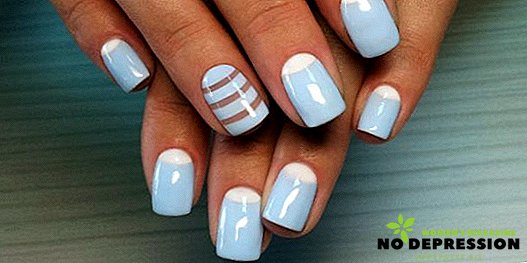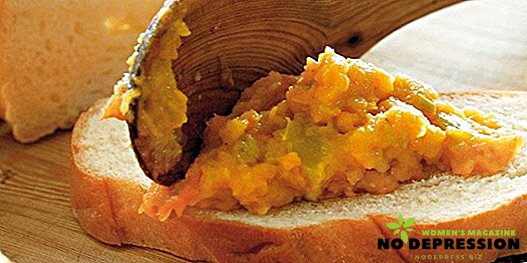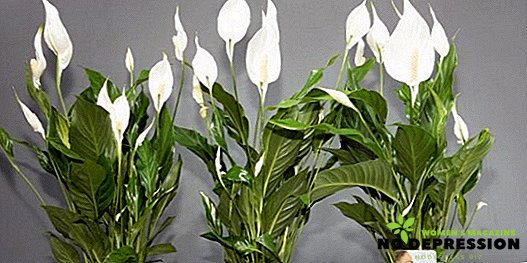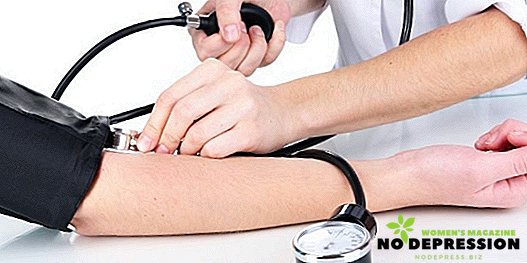An ingrown nail is a pathology in which the lateral edge of the plate grows into the tissue of the periungual ridge. Various causes can provoke onychocryptosis.
In place of ingrowth, an inflammatory process develops. Pathology can go through several stages of development, and each of them is accompanied by a specific clinical picture. Treatment of the disease is carried out using conservative methods, and by surgical intervention.
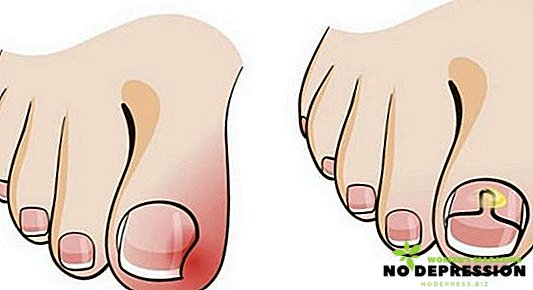
Causes of ingrown toenail
Oniocryptosis on the foot gives the patient severe pain and discomfort, but despite this, most patients do not rush to get medical help and come with a neglected stage. In this condition, the only method of treatment is surgery with local anesthesia.
This is due to the fact that the pathology is accompanied by the appearance of such symptoms that visually the nail seems to be absolutely normal. Most often, the plate grows on the little finger and thumb, and this happens for various reasons.
 The following factors can provoke onychocryptosis:
The following factors can provoke onychocryptosis:
- non-compliance with hygiene rules for foot care;
- fungal infections;
- injuries and injuries of various kinds;
- genetic factor.
In some cases, flatfoot and some anatomical abnormalities in the formation of the foot can lead to the development of pathology. External causes are improper care, when, in the absence of necessary hygiene, dirt accumulates under the nails, which can lead to improper growth and deformation. Onychocryptosis may be caused by wearing too narrow shoes and heels, when the entire load falls on the edge of the foot. In such a situation, pathology can develop on any fingers.
One of the common causes of onychocryptosis is improper cutting of the nail. The risk of developing pathology increases in the case when a person cuts thick nails too short, while cutting off deep corners.
Symptoms and stages of the disease

Onychocryptosis is a disease that can affect any toe. Pathology is accompanied by inflammatory changes of the periungual roller, that is, pain syndrome, redness and swelling. With a slight pressure on the area of ingrowth of the plate, the discomfort noticeably increases. Mostly, the place of localization of onychocryptosis is the big toe, which is why there are often problems with wearing closed shoes.
Often ingrown nail is accompanied by infection. In such a pathological condition, a marked increase in pain and swelling is noted, and purulent exudate begins to stand out from under the plate. In the absence of effective therapy, the infection spreads to the adjacent tissues and the entire foot.
There are several stages of oniocryptosis:
- 1 degree. The patient has a slight pain during walking. Inflammation of the soft tissues is accompanied by weak puffiness and hyperemia.
- 2 degree. There is an increase in the acute angle of the nail plate and its subsequent ingrowth into the roller. The result is a strong swelling of tissues and their redness, as well as inflammation of the nail with the appearance of pus.
- 3 degree. The patient is diagnosed with excess granulation in the form of a reddish nodule, which bleeds slightly. In the absence of treatment and the transition of the inflammatory process to the chronic form, the plate begins to bend, becomes thicker and dull.
Oniocryptosis requires mandatory treatment, otherwise there is a high likelihood of developing complications such as osteomyelitis, lymphangitis, erysipelas, and malignant tumors.
Ingrown nail treatment
 The choice of one or another method of treatment of onychocryptosis is determined by the degree of the pathological process and the reasons that provoked it. It is possible to eliminate the pathology with the help of conservative, orthopedic and surgical methods.
The choice of one or another method of treatment of onychocryptosis is determined by the degree of the pathological process and the reasons that provoked it. It is possible to eliminate the pathology with the help of conservative, orthopedic and surgical methods.
The main goal of conservative therapy is to eliminate the purulent-inflammatory process and reduce the severity of pain in the finger. It is possible to alleviate the patient's condition with the help of antiseptics, hot foot baths with potassium permanganate or anti-inflammatory herbal infusions. In addition, prescribed the use of antimicrobial agents in the form of ointment and powder, which contain neomycin and bacitracin. One of the most effective medicines is Baneotsin, which penetrates deep into the nail bed and accelerates wound healing.
With conservative treatment it is recommended to make foot baths with the addition of antiseptics such as Furacilin, chamomile and St. John's wort decoction. In the event that there is a suppuration of the nail, then after the baths it is recommended to apply dressings with antibacterial ointments to the area of inflammation.
For orthopedic treatment, individually made springs or scrapings of metal, which are identical to briquettes, are used. In recent years, nail correction with plates is often used.
The operation to remove the ingrown nail
 In that case, if the thickening of the nail shaft is diagnosed, then resort to surgical treatment. The patient is removed part of the ingrown plate or part of the nail roller, which has undergone changes. After surgery, the inflammation of the soft tissues of the foot is reduced and it is possible to get rid of irritation. A few months after surgery, the nail restores its former shape and appearance.
In that case, if the thickening of the nail shaft is diagnosed, then resort to surgical treatment. The patient is removed part of the ingrown plate or part of the nail roller, which has undergone changes. After surgery, the inflammation of the soft tissues of the foot is reduced and it is possible to get rid of irritation. A few months after surgery, the nail restores its former shape and appearance.
When excreting pus from under the plate or when it is severely deformed, it becomes necessary to completely remove the nail. Such an operation is often accompanied by damage to the growth zone of the nail, which leads to unpleasant consequences. In most cases, the growing nail acquires an irregular shape.
One of the most effective and effective methods of treatment for onychocryptosis is to remove the nail with a laser. Such treatment is considered less traumatic compared with surgery. During the procedure, the patient is given local anesthesia and disinfection of the inflamed area is performed. After that, a laser beam is applied to the ingrown part, and the edges of the nail are slightly cauterized.
Removal of the ingrown plate with a laser continues for about half an hour, after which the affected area is treated with a solution with an antiseptic effect. The price of the operation is quite high, but the long-lasting effect persists for a long time.
How to treat an ingrown toenail at home
At home, it is possible to alleviate the patient's condition with onychocryptosis using folk remedies
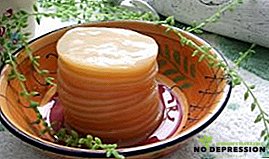 Tea mushroom. It is necessary to insist kombucha to the state of acetic acid and put a small piece of it on the ingrown nail. Top compress wrap plastic wrap, tied with a cloth and leave until morning.
Tea mushroom. It is necessary to insist kombucha to the state of acetic acid and put a small piece of it on the ingrown nail. Top compress wrap plastic wrap, tied with a cloth and leave until morning.- Butter. Moisten the nail in soda solution and attach a piece of oil to it. Cover your finger from above with a napkin and a wrap, and then band it up. After a day, remove the compress, steam the nail in soda solution again and put a piece of cotton oil soaked in butter under the edge of the nail. Close the finger again with a napkin and a wrap and wrap it. This procedure is recommended every day until the healthy nail grows back.
- Honey with onions. It is necessary to clean the onion of medium size, chop thoroughly and mix with a tablespoon of honey. The nail plate should be softened in soda-saline solution and put the prepared mixture overnight. Finger wrap film and bandaged, and in the morning try to bring out the edge of the nail.
An effective folk remedy is considered to be aloe, which has an anti-inflammatory effect. You can cut a piece of aloe leaf with a nail, hold it over the fire and impose on the ingrown plate. Finger close the film, bandaged and left until morning, then try to bring out the edge of the nail.
Preventive measures for ingrown toenail
Prevention of onychocryptosis is the choice of comfortable shoes and proper nail care. It is not recommended to cut the nails too short and cut off the corners, since their edge should form a straight line and protrude slightly above the soft tissues.
In order to prevent onychocryptosis, the best thing to do is not simple, but medical pedicure with the help of plugging and devices. During this procedure, nails and nail rollers are treated with special tools.


 Tea mushroom. It is necessary to insist kombucha to the state of acetic acid and put a small piece of it on the ingrown nail. Top compress wrap plastic wrap, tied with a cloth and leave until morning.
Tea mushroom. It is necessary to insist kombucha to the state of acetic acid and put a small piece of it on the ingrown nail. Top compress wrap plastic wrap, tied with a cloth and leave until morning.